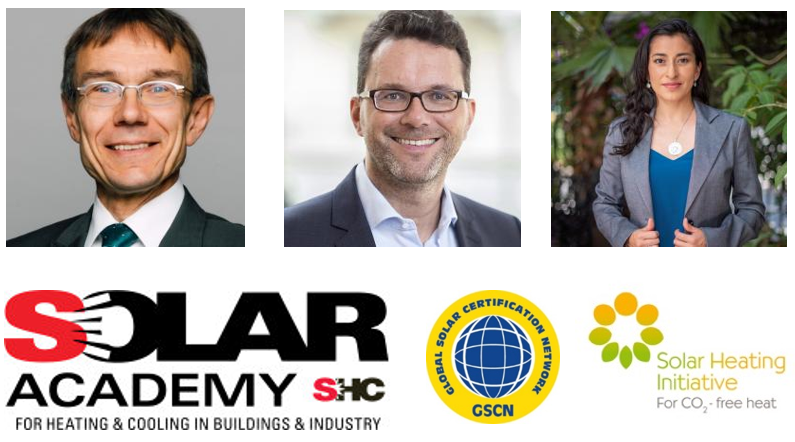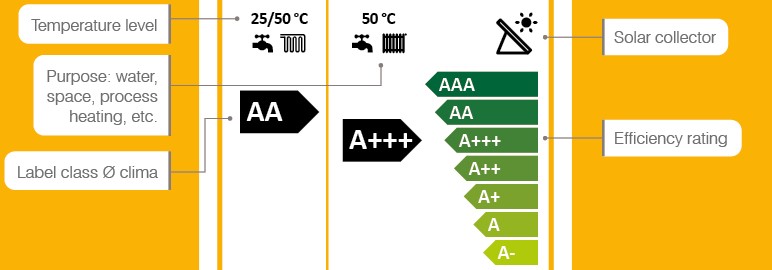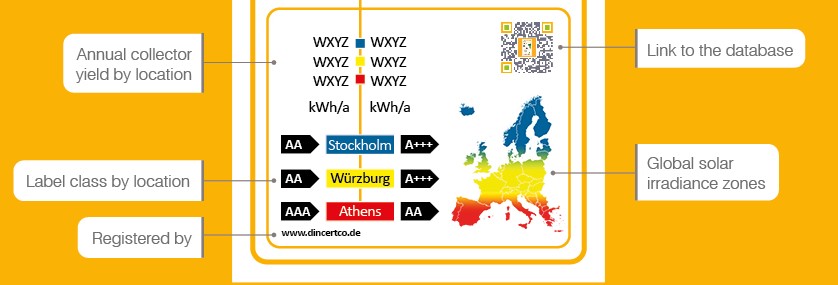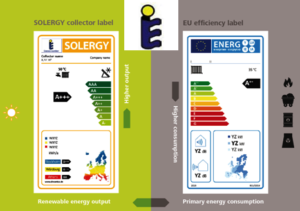Certification and labelling: Experts answer questions from the industry
May 3, 2022
Third-party quality control is key for consumers. Labelling of products supports customers in taking the right decisions. For solar collectors in Europe, Solergy is such a quality label. It shows how much collectors can contribute to a CO2-free heat supply in different locations and at different temperature levels. In close collaboration with the Global Solar Certification Network (GSCN) the Solergy is now available also in North America and is planned to be introduced later in Latin America, Asia and Oceania. The experts behind these two initiatives (from left) – Harald Drück (GSCN Chairman), Sören Scholz (Deputy Head of the German certification body DIN Certco) and Marisol Oropeza (Head of Marketing of the Global Solar Heating Initiative) – answered a lot of questions during the IEA SHC Solar Academy webinar in March 2022. The recording and the presentations are available online. You can find further background information on the joint initiative of GSCN and the Solergy label here.
Graphics: IEA SHC Solar Academy Webinar
Which novelties does the international collector standard ISO 9806 include that were not part of the previous version from 2013?
Drück: I would like to highlight the most important changes in the revised ISO 9806 from 2017. One important aspect was improvements concerning the testing and performance assessment of so called WISC collectors. WISC stands for wind and infrared sensitive collectors. Typically these collectors are polymeric absorbers for swimming pool heating or other uncovered collectors. The new collector standard improved the way they are tested and how their performance is assessed, for example depending on the wind speed.
The standard was also opened for PV-thermal collectors that produce electricity and heat simultaneously. When testing their thermal performance, it is important, for example, to operate them with am MPP tracker with regard to the electricity generation.
Is India already part of the GSCN?
Drück: Unfortunately not. Test labs and certification bodies in India face the challenge that the ISO standard 9806 is not yet implemented in their country. But Indian manufacturers can still profit from membership of GSCN. On the one hand, they can obtain the Solergy label in the future and on the other hand if they want to export their products to different regions worldwide, they can profit from harmonised testing and inspection procedures in Europe and the USA. This is e.g. relevant for obtaining Solar Keymark and SRCC certification.

Graphics: Solar Heating Initiative
Solergy label goes global
Are there already companies from Mexico that have applied for the Solergy label?
Oropeza: No Mexican company has applied for the label yet. Currently, the Solergy label is available for two regions: Europe and North America. DIN Certco issues the label for Europe and SRCC for North America. Manufacturers or distributors from any part of the world can apply for any or both labels if they have a Solar Keymark and/or an SRCC certification. In alliance with GSCN we will start a global campaign to promote the labels. We are looking forward to receiving applications from companies from around the world.
How high are the fees for applying for the Solergy label?
Scholz: At DIN Certco we use a so-called schedule of fees. So we have set a fee for the application and for the technical assessment and the data sheet checking etc. For one collector in two sub-types, for example, the fees are roughly EUR 500. A part of the payment goes to the test lab, another part to the Solar Heating Initiative and also one part is transferred to GSCN.
How about concentrating collectors? Are they covered in the ISO Standard 9806? And are they eligible for the Solergy label?
Drück: Yes, concentrating collectors are included in ISO 9806. There are some special issues like, for example, the stagnation behaviour, for which tests have to be carried out differently than for ‘typical’ flat plate and vacuum tube collectors, but in general, yes.
Oropeza: The Solergy label was first developed for flat plate and evacuated tube collectors and it will soon be extended for PV-thermal collectors. When concentrating collectors are Solar Keymark certified, it would also be possible to create a Solergy label for these collectors, but we have not had a request yet.
Solergy label shows contribution to clean heat supply
Are costs included in the metric of the Solergy label?
Oropeza: The Solergy label reflects how efficiently the collector is using the solar irradiation on its surface. If you want to analyse solar heat costs, you need to consider the whole system. Besides the collector this includes the heat storage tank, the support structure and other components. So this is quite complex and we wanted to keep the Solergy label simple. That’s why we focus on the core component of a solar thermal system, which is the collector.

The classes of the label from AAA to A- allow a direct comparison of collectors. Do manufacturers shy away from this direct comparability?
Oropeza: Well, 22 flat-plate and evacuated-tube collector manufacturers from several countries have applied for the Solergy label for Europe already. Many of them are using it actively in their technical documentation and marketing materials. Some of them have renewed the label annually since 2016, so this shows that it is already accepted.
As you all know, there is no bad or good collector. Their performance always depends on the application, the temperature level that is needed and the solar resource available in the specific location. The label shows how well the solar irradiation is used by a collector at different temperatures and locations. This is very important for collector manufacturers especially if they export to multiple countries and target clients from various segments (swimming pool heating, water heating, process heat, etc.). The solar thermal industry also needs to show the contribution of solar collectors to a cleaner and independent heat supply, and that is exactly what the Solergy label does.

There is a QR code on the label. What does it link to?
Oropeza: The individual QR code is a new feature of the label, which has been integrated along with other things such as the logo of the GSCN and further temperatures and applications. The labels which are already out in the market do not have this QR code. However, all the Solergy label registrations are publicly available online on the website of DIN Certco. When the new Solergy labels are issued, the QR code will lead the viewer directly to the registration documents of this particular labelled product.
Regarding PVT collectors: will the solar electricity production of the PVT collector be taken into account by the Solergy Label?
Oropeza: Yes indeed, the methodology has been updated and now includes the electrical yield of the PVT collector.
How about air collectors? Will the Solergy label also be adapted for this collector type?
Scholz: So far, the Solergy label has only been for water heating collectors. But the new temperature level with 25 °C average operation temperature, which was introduced for unglazed swimming pool absorbers, can also be used for air collectors if their yield can be calculated with the software tool ScenoCalc. However, there would currently be no specific symbol to indicate that it is an air collector.
Another more technical question: Does the Solergy label consider the whole lifespan of the collector?
Oropeza: No, the Solergy label is based on the annual collector yield by location listed on the second page of the Solar Keymark data sheet.
Does GSCN have plans to issue its own label?
Drück: No, we don´t have plans to issue a global label. But we have the plan to extend the global solar certification approach to other product groups such as thermosiphon systems.
Organisations mentioned in this article
‘Recording of IEA SHC Solar Academy webinar in March 2022
Global Solar Certification Netwerk
Solar Heating Intiative
IEA Solar Heating and Cooling Programme
IEA SHC Solar Academy
DIN Certco


